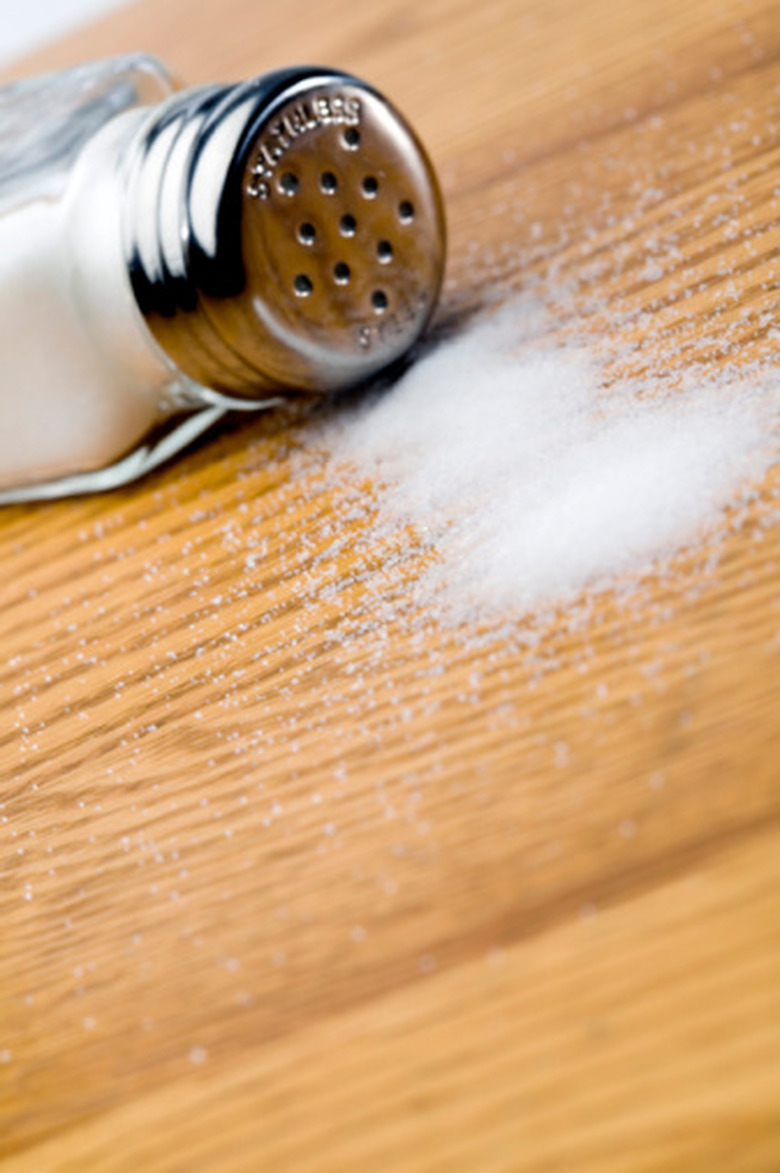What Are The Properties Of Ionic Crystals?
A crystal is solid state of matter containing an internal arrangement of atoms, molecules or ions that is regular, repeated and geometrically arranged. Crystals can be grouped by the geometrical shape of their internal arrangement or by their physical and chemical characteristics, or properties. Ionic crystals are one of the four main categories of crystals when grouping them based on their physical and chemical properties.
Bond Strength
Bond Strength
Ions are atoms that carry either a positive or negative charge. The electrostatic forces between the oppositely charged ions making up the crystal hold the atoms together. The attractive forces between oppositely charged ions are significantly stronger than those between neutral atoms and account for the properties exhibited by ionic crystals. Sodium chloride, more commonly known as table salt, is an example of an ionic crystal.
Electrical Conductivity
Electrical Conductivity
Ionic crystals are soluble in water. When dissolved, the ions making up the crystal dissociate, or separate, freeing them to carry electrical charge through the solution. Ionic crystals in a molten state also conduct electricity well. Like dissolving the crystals in water, melting them allows free ions to move to positive and negative poles.
Hardness
Hardness
The strength of the bonds between ions in ionic crystals make them quite hard when compared to other types of crystals. Despite their hardness, ionic crystals are brittle. Under pressure, ions within the crystal that have the same charge slide into alignment. The resulting electrostatic repulsion between like ions causes the crystal to split.
Melting and Boiling
Melting and Boiling
When a substance is in its solid form, its atoms are so tightly bound that they remain in a relatively fixed position. Heating the solid causes the atoms to move and although they remain bound to each other, the attachments are looser and the solid liquefies. Heating a liquid causes its particles to eventually overcome the bonds that hold them together and the liquid vaporizes. The temperature at which vapor pressure is large enough to cause bubble formation within the liquid is called the substance's boiling point. Pure crystalline solids have characteristic melting and boiling points, properties commonly used to identify them. Ionic crystals exhibit high melting and boiling points relative to those with weaker, non-ionic bonds.
Enthalpies
Enthalpies
The enthalpy of fusion is the amount of heat required to melt a specific quantity, called a mole, of a solid substance while maintaining constant pressure. The enthalpy of vaporization is the amount of heat required to convert one mole of a liquid substance into a gaseous state, under constant pressure. According to Fred Senese of Frostburg State University's Department of Chemistry, these properties are typically 10 to 100 times greater for ionic crystals when compared to those with weaker chemical bonds.
Cite This Article
MLA
Ruscitto, Cynthia. "What Are The Properties Of Ionic Crystals?" sciencing.com, https://www.sciencing.com/properties-ionic-crystals-8067005/. 24 April 2017.
APA
Ruscitto, Cynthia. (2017, April 24). What Are The Properties Of Ionic Crystals?. sciencing.com. Retrieved from https://www.sciencing.com/properties-ionic-crystals-8067005/
Chicago
Ruscitto, Cynthia. What Are The Properties Of Ionic Crystals? last modified March 24, 2022. https://www.sciencing.com/properties-ionic-crystals-8067005/
